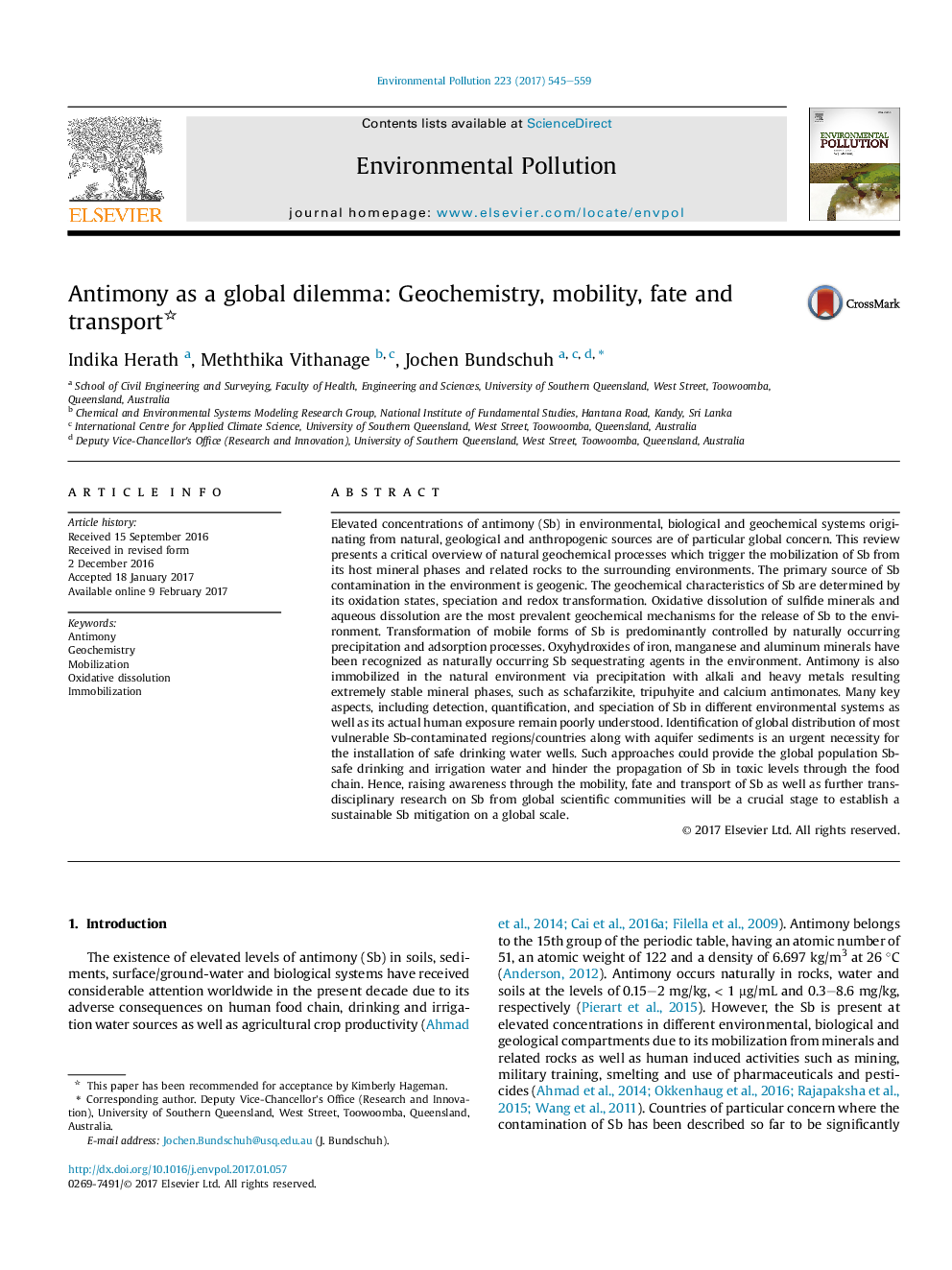| کد مقاله | کد نشریه | سال انتشار | مقاله انگلیسی | نسخه تمام متن |
|---|---|---|---|---|
| 5749335 | 1619150 | 2017 | 15 صفحه PDF | دانلود رایگان |
- Toxicology, bioavailability and bio-accessibility of antimony as a global threat.
- Natural geochemical processes of antimony bearing mineral phases.
- Chemical speciation and redox transformation of antimony.
- Antimony mobilization mechanisms and naturally occurring control strategies.
Elevated concentrations of antimony (Sb) in environmental, biological and geochemical systems originating from natural, geological and anthropogenic sources are of particular global concern. This review presents a critical overview of natural geochemical processes which trigger the mobilization of Sb from its host mineral phases and related rocks to the surrounding environments. The primary source of Sb contamination in the environment is geogenic. The geochemical characteristics of Sb are determined by its oxidation states, speciation and redox transformation. Oxidative dissolution of sulfide minerals and aqueous dissolution are the most prevalent geochemical mechanisms for the release of Sb to the environment. Transformation of mobile forms of Sb is predominantly controlled by naturally occurring precipitation and adsorption processes. Oxyhydroxides of iron, manganese and aluminum minerals have been recognized as naturally occurring Sb sequestrating agents in the environment. Antimony is also immobilized in the natural environment via precipitation with alkali and heavy metals resulting extremely stable mineral phases, such as schafarzikite, tripuhyite and calcium antimonates. Many key aspects, including detection, quantification, and speciation of Sb in different environmental systems as well as its actual human exposure remain poorly understood. Identification of global distribution of most vulnerable Sb-contaminated regions/countries along with aquifer sediments is an urgent necessity for the installation of safe drinking water wells. Such approaches could provide the global population Sb-safe drinking and irrigation water and hinder the propagation of Sb in toxic levels through the food chain. Hence, raising awareness through the mobility, fate and transport of Sb as well as further transdisciplinary research on Sb from global scientific communities will be a crucial stage to establish a sustainable Sb mitigation on a global scale.
502
Journal: Environmental Pollution - Volume 223, April 2017, Pages 545-559
